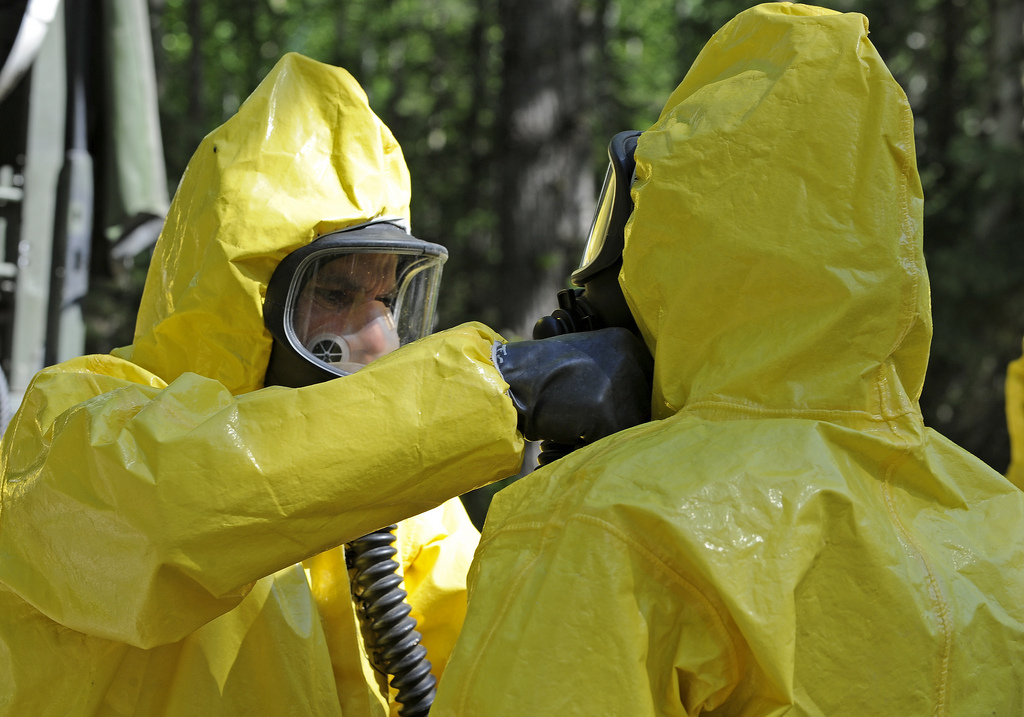Brisbane City Council (BCC) has an expensive drug problem and it’s not getting any smaller.
With as many as 40 clandestine illegal drug factories identified within its boundaries each, the Queensland super council is urgently appealing to the state government’s Department of Health (QLD DOH) to help it get, quite literally, clean.
When drug busts go down, the television news normally carries images of forensic police in ‘HAZMAT’ space suits year carrying away evidence for prosecutions.
But what doesn’t make the news is that it’s then down to local councils to deal with the toxic aftermath that comes in the form of dangerously contaminated sites.
Now Brisbane City Council is arguing it has neither the expertise, training nor resources to deal with the toxicity left behind by an illegal trade that where the chance of getting polluters to clean up just isn’t a realistic option.
The local government told the Local Government Association Queensland Conference in Mackay in late October that its staff simply did not have the skills or experience to test soil samples and remediate toxic land after the drug cooks had left.
And with drug busts being a largely state government issue, the council wants Queensland Health to take the lead investigating the public health risks of illegal drug labs and to provide training, funding and guidelines on the long-term remediation of land previously used to manufacture drugs.
It’s a it’s a problem that nobody appears keen to in herit.
Sophie Dwyer, Executive Director Health Protection Unit at Queensland Health, said local councils were responsible for monitoring and enforcing site remediation undertaken by a property owner and had the expertise to mange this process.
“The level of contamination in most cases is low and within the capability of most property owners to clean up using the information in the Department of Health fact sheet. This is because most of the clandestine laboratories discovered in Queensland are used to produce drugs for personal use,” Ms Dwyer said.
Ms Dwyer said the residual contamination at former clan lab sites may be hazardous enough to constitute a local government public health risk.
“In situations where a property owner does not undertake action to ensure that the property is safe for future occupation, local government may be required to manage the public health risk by arranging for a contractor to clean the property at the owner’s expense.”
Local councils could recover costs from property owners if they needed to step in and manage an ex-clan labs site.
Ms Dwyer said Queensland Health would continue to provide advice and training to local councils and she insisted that council staff had the skills needed to manage ex-clan lab sites.
“Local government environmental health officers currently possess the necessary skills to identify and assess health risk,” Ms Dwyer said.
“Additionally, local government environmental health officers are also experienced in applying public health legislation to manage a broad range of public health risks to ensure a risk is appropriately managed. This is being reinforced in Local Government Authorised Person’s Asbestos Training being provided to the state to local governments.”
A Queensland Health fact sheet about clan drug labs outlines the risk to human health of these sites. The toxic gases produced during the drug manufacturing can be absorbed by the floor, walls, furniture, fittings, drains and ducting and there is still chemical contamination after chemicals and equipment have been removed.
Chemicals resulting from a ‘cook’ can include phosphine, iodine, hydrogen chloride, solvents, and methylamphetamine, which can cause throat and skin irritation, breathing problems and mental health problems, if people are exposed to them long term.
“Contamination can remain in structures for a long time into the future,” says the fact sheet.
Figures from the Queensland Police Service indicate that at least one drug lab is busted every day in Queensland, with 95 per cent of these being methylamphetamine labs. Drug manufacturers usually choose rented property, although remote rural properties, hotels and commercial and industrial properties are also common.
Rendering the site of a clan lab safe can involves a risk assessment, based on the police’s site report, investigating contamination further, contamination report, lab analysis and a remediation action plan before a contaminated site is made completely safe.






Leave a Reply